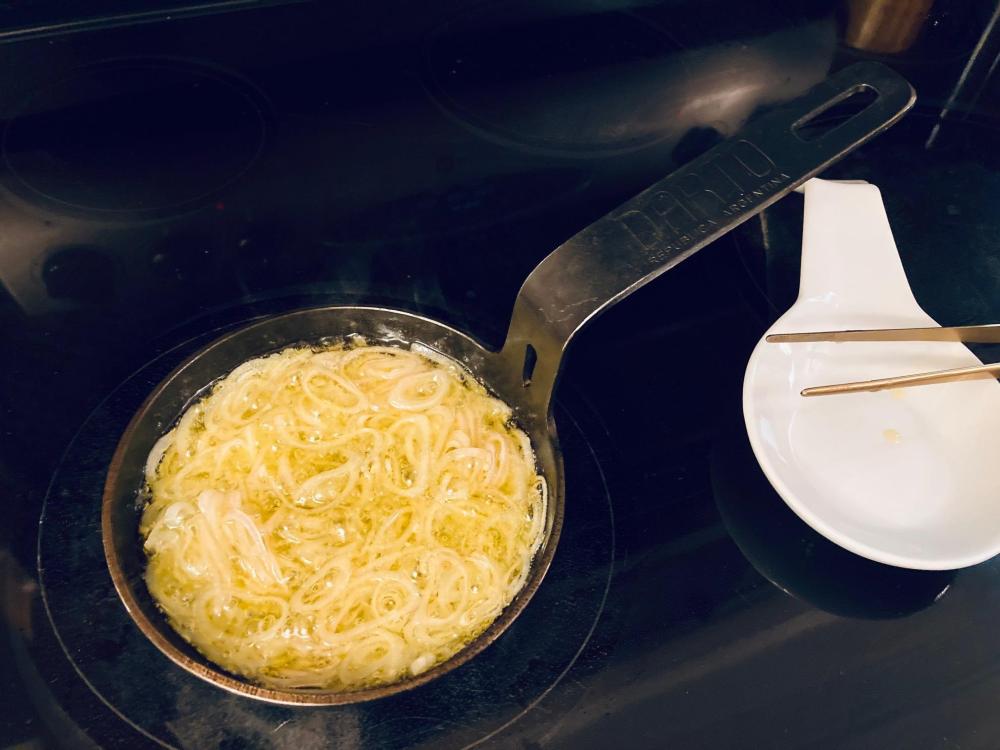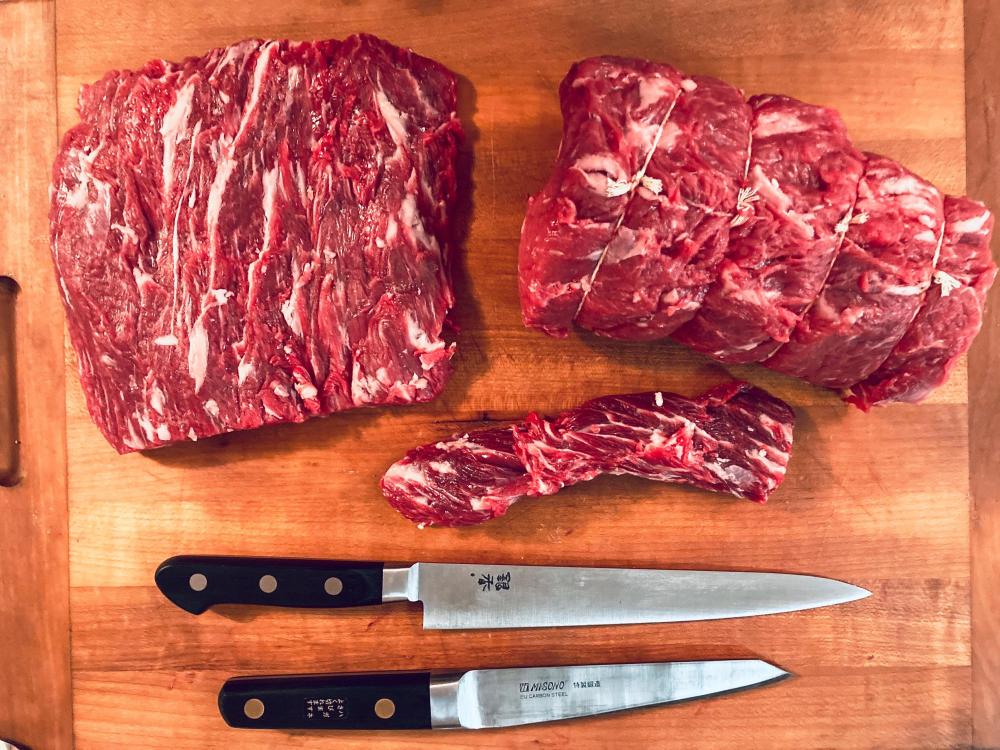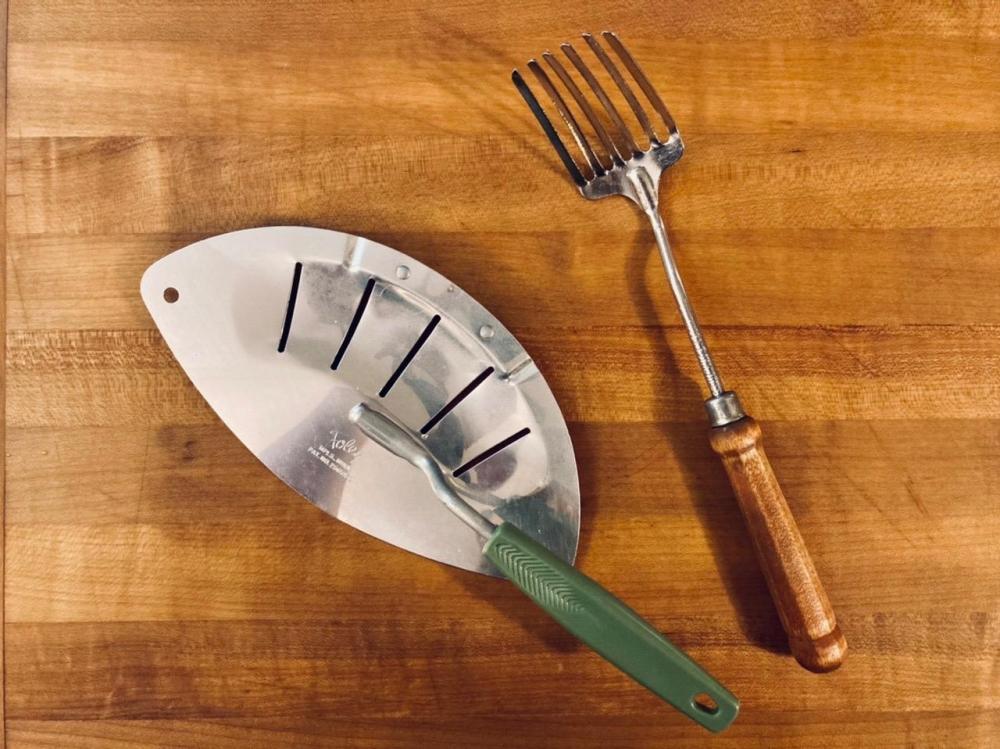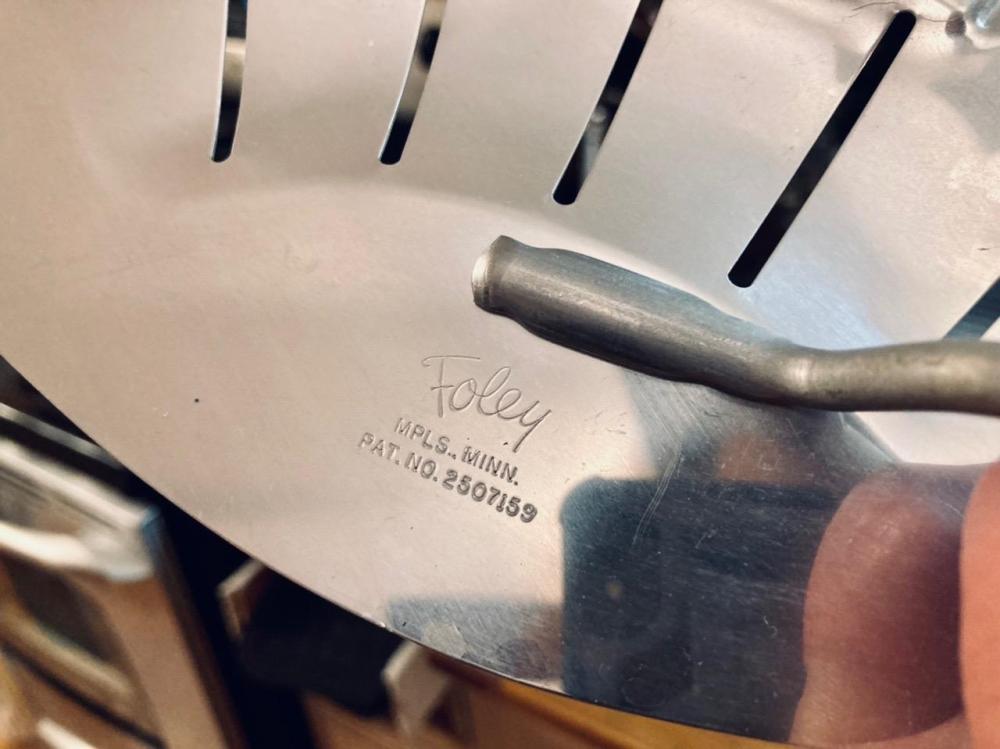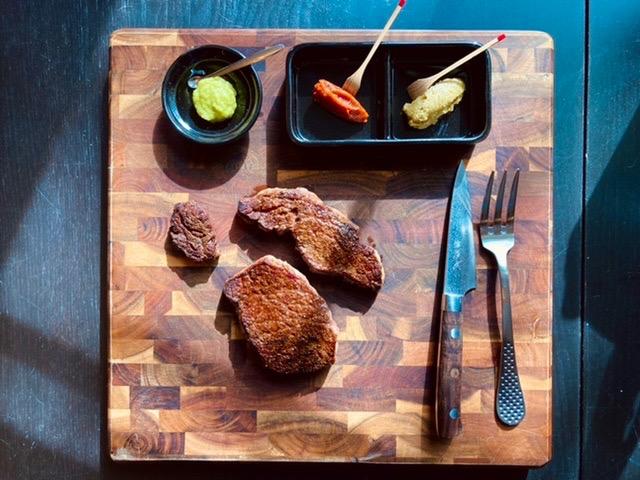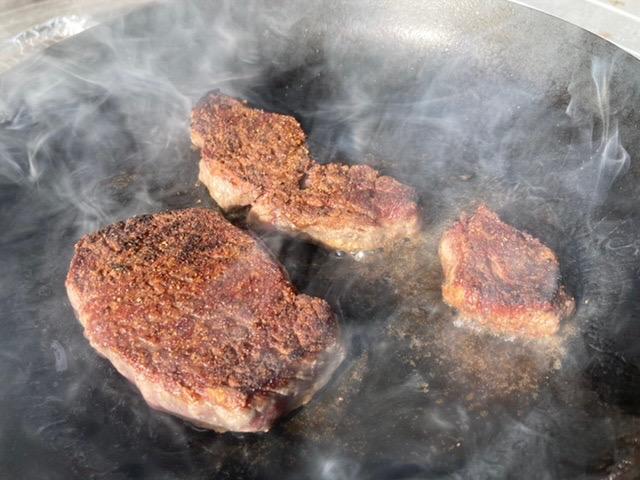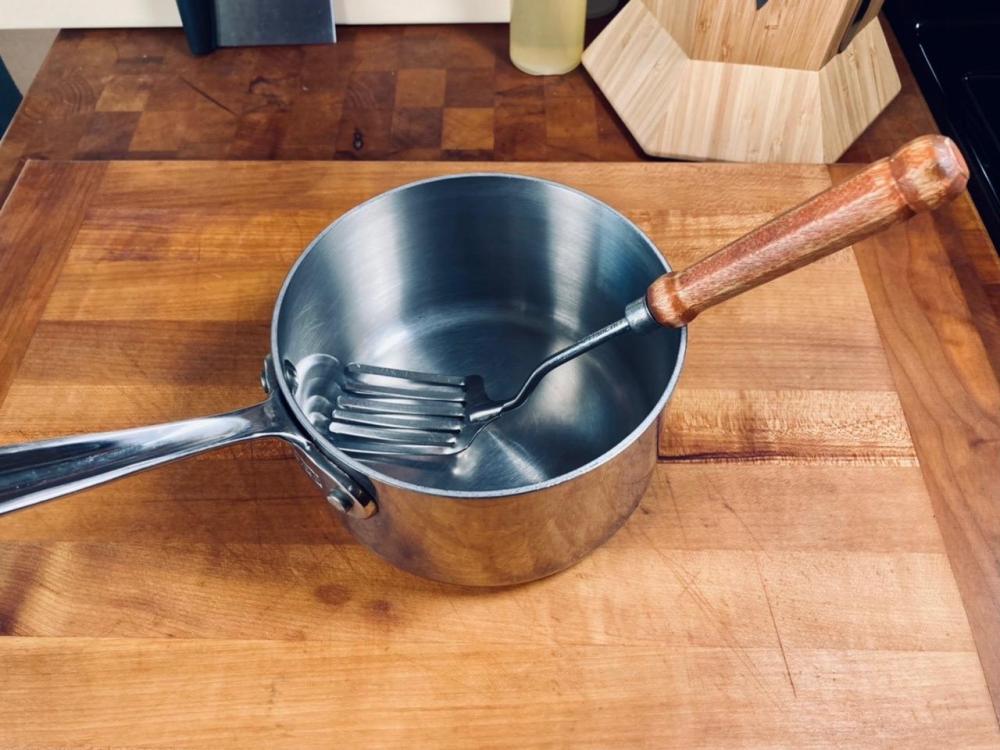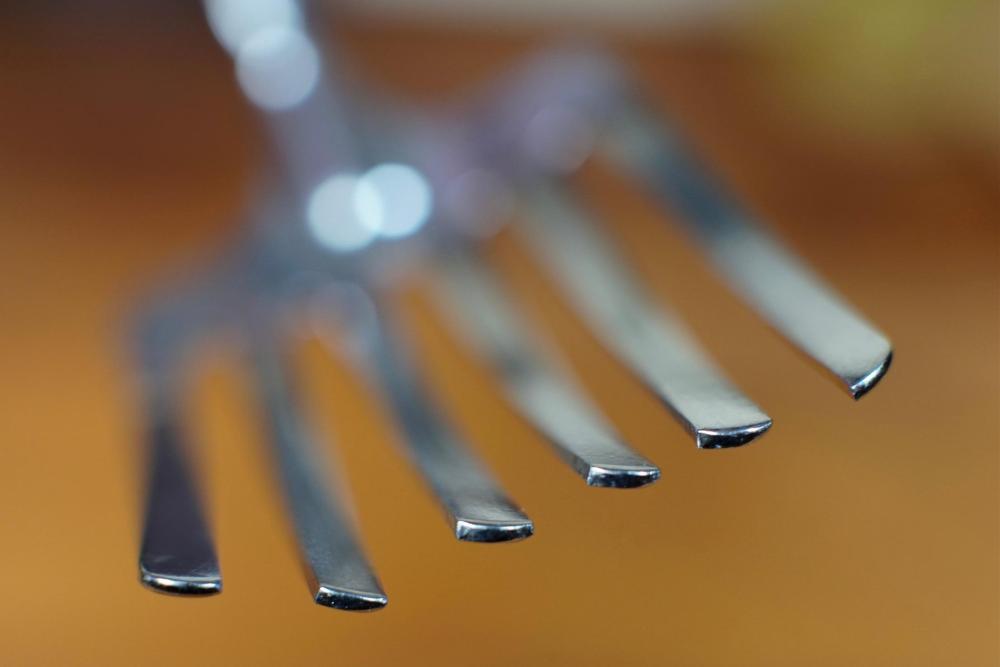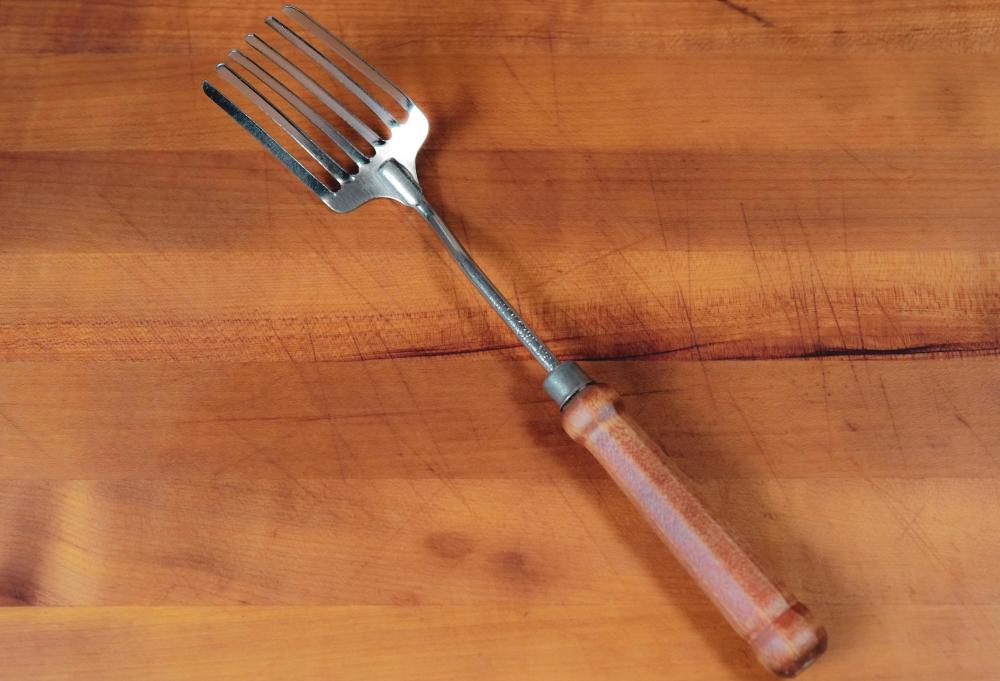-
Posts
1,807 -
Joined
-
Last visited
Content Type
Profiles
Forums
Store
Help Articles
Everything posted by btbyrd
-
I have a chamber vac and my advice would be the same as KennethT's: just use Ziploc freezer bags and the displacement method. Unless you're going to try to store something for an extended period of time, there's little advantage to using a vacuum machine. The one area where this gets dicey is cooking vegetables at higher temps (85C+) where zippies can start to get soft and seams can fail. For that though, an inexpensive edge sealer would suffice. If you're cooking at normal protein temps, ziptops are the way to go.
-
Blender parm is the way.
-
I find the No. 15 to be mostly useless because it's so small... but it's also super useful when I want to deep fry a shallot or two in a few ounces of oil. I also use it to toast spices, but it has no real advantage there over larger pans. You can also put a screaming sear on a tenderloin steak or something in it... if you really want to.
-
+1 for what Dr. Teeth said, though I'll add that European knives also need to be sharpened periodically even though it seems like nobody ever does it. The suggestion to get a nice entry level knife and practice sharpening is definitely good advise. You could also pay a little more and get a more "artisanal" knife that has a core steel of white or blue (shirogami or aogami) carbon steel. These are the most popular reactive (non-stainless) steels used in Japanese kitchen knives. They're very lightly alloyed (they're mostly just iron and carbon) and fine grained. This makes them very easy to sharpen, and it's a pleasure to learn on this kind of steel compared to stainless (which is, generally speaking, more challenging to sharpen). It's possible to get basically any knife shaving sharp with just a 500 grit stone. Sharpness isn't an intrinsic attribute of a knife, but is something that happens to a knife. Some knives come with an excellent edge from the factory while others require a bit of touching up to reach their full potential. Some Japanese makers don't bother to put a fully sharpened edge on their knives because they assume that the customer will do that themselves. Other makers are known for having an extremely keen edge out of the box, but edges don't last forever. Even the sharpest knife will dull after a few months of use. Granted, it may still be sharper at that point than your average home kitchen knives (which are horrid) but "shaving sharp" doesn't last long and is something you have to bring back. And unless you live near a reputable sharpener (which you probably don't) then the best option is to learn how to do it yourself. It seems daunting, but it's not rocket science. Korin and Japanese Knife Imports have excellent sharpening tutorial videos on YouTube. As for single bevels, I generally advise that people should only buy a single bevel knife if it's perfectly clear to them why they want and need a single bevel knife. They're specialized tools for specific jobs, and unless you're regularly trying to make sushi or other Japanese cuisine at home, you'll have little use for these specialist knives. The kind of sharpening progression Watanabe offers is less about sharpness and more about the appearance and evenness of the bevel. It's more of a polishing step, not a sharpening step. And an Edge Pro is the wrong tool for sharpening single bevels.
-

eG-Inspired Kitchen Gadget Purchases (aka The Enablers' Hall of Fame)
btbyrd replied to a topic in Kitchen Consumer
If anyone else on here wants a mag stirrer/hotplate, I have a new one in box that I'll pass on for very little cost. My experiments in vacuum reduction were not meant to be! -
I know this is a necrothread and the bump wasn't really looking for advice about the original topic, but here I go anyway... For a general purpose knife, I find an 8" knife to be almost too short, 10" to be almost too long, and 9" or so to be right in the sweet spot. A larger knife makes it much easier to work with large produce like cabbages and melons, as well as larger roasts and other meatly items. If slicing is your main concern though, a dedicated knife will likely perform better than a chef's knife will. But unless you're working on a buffet line slicing roast beef or something, put your money toward a good chef's knife first. My preference would be for a chef's knife anywhere between 21cm and 24cm long, a smaller utility knife (or bunka or santoku) around 180mm long, and a paring knife. That way you don't have to break out your big knife when all you need to do is dice an onion or make a sandwich or something.
-
There can be a flavor difference in the meat itself, but there's nothing wrong with your overall approach. This is how a lot of what is commercially sold as "ground beef" is created -- lean beef scraps are ground with a certain ratio of fat to yield a particular percentage in the end product. But I usually prefer the flavor of the tougher cuts (like shoulder) that are commonly used to make ground pork and beef. My local market sells 80/20 ground beef (made from random mince and fat) and 80/20 ground chuck, and I prefer the flavor of the chuck. But if getting the fat percentage right is your main priority, there's nothing wrong with taking a good-favored but lean cut and then grinding it with fat (or grinding it and adding ground fat back in).
-
Some prime rib sliders for Christmas with my family. With horseradish sauce and arugula. Broke the 8.6lb roast down a couple days ago. Ended up with a pint of rendered tallow, a few pounds of bones and scraps to make stock, and three lovely cuts of beef. I’m saving the rib cap for myself. Salted the ribeye and put it on a rack in the fridge for 36 hours. Then seared it super hard in my Darto 27. The core temp was still ice cold after all that searing. Then into a low oven for an hour and a half. The core hit 131F after testing. Here it is before carving. Finally, sandwich time. Red and green for the holiday!
- 913 replies
-
- 13
-

-

-

eG-Inspired Kitchen Gadget Purchases (aka The Enablers' Hall of Fame)
btbyrd replied to a topic in Kitchen Consumer
That warms my heart! -

eG-Inspired Kitchen Gadget Purchases (aka The Enablers' Hall of Fame)
btbyrd replied to a topic in Kitchen Consumer
And I think I'm the EG "master enabler" of Darto pans (though the credit for me goes to ChefSteps). I like having an IP and a stovetop cooker for those rare occasions when neither will suffice to make the amount of stock I require. This is usually a Thanksgiving problem. I'm often the turkey cook for two different Thanksgivings, which means I end up with two carcasses (and four wings). This overwhelms my 8 quart stovetop cooker and my 6 qt IP, but together they get the job done. I also like having the IP around to keep things warm to serve at big gatherings. -

eG-Inspired Kitchen Gadget Purchases (aka The Enablers' Hall of Fame)
btbyrd replied to a topic in Kitchen Consumer
I was waiting for someone to mention me! Surprised it took until page 2 -- thanks Smithy! -
Haven't tried that recipe, but Modernist Pantry ships anywhere in the world and can supply all your magic powder needs.
-

How do you take your whiskey: neat or with water/ice?
btbyrd replied to a topic in Spirits & Cocktails
I order spirits neat occasionally and haven't had a problem with being understood. But I'm usually doing it at places with well-trained staff. I am a firm believer that a splash of water can open up a spirit and make its subtleties become more apparent. On our first stop touring the bourbon trail, my wife and I visited Heaven Hill in Bardstown. After completing their tour, we did a complimentary tasting where we were offered, among other things, some 18 year old Elijah Craig. It was served alongside a small dropper bottle of water. We were instructed to smell and taste the bourbon neat, then to add a few drops of water to the glass and nose/taste again. The difference between "before" and "after" was not small; the aroma, taste, and overall flavor were much enhanced by the addition of a small amount of water -- not enough to dilute things, but enough to wake up the spirit. I don't know the chemistry of why this happens, but it's undeniable. My usual drink at home is booze in a glass with ice. Not a lot of ice, but I do like a cube or two to chill things down slightly and tame the burn -- if I'm going to be having more than one, that is. I also don't tend to put ice in anything that costs more than $35 or so -- with the possible exception of some barrel strength stuff, and then only on occasion. In the expensive stuff, a drop or two of water is all I add. Unless it's the summer time. Or I just feel like it. I have no principles. -

Effective, inexpensive kitchen gadgets you couldn't live without
btbyrd replied to a topic in Kitchen Consumer
Made some mashed potatoes tonight and remembered another Foley tool that I'd forgotten about. Not a masher, but I'm hoping that my mentioning it in this thread won't be unwelcome. It's a "kettle draining device" (according to the patent) or "pot strainer" (as I call it). It keeps your potatoes (or pasta or whatever) in the pot but lets the boiling water out. I got it as a bonus when I bought a different Foley fork on eBay (with the same green handle as this strainer) that I gifted to a friend. The strainer/drainer takes up a lot of space in a drawer, but it hangs nicely alongside my other hanging kitchen tools. Not a necessity, but I do use frequently when I make mashed potatoes. And sometimes making pasta. Saves the trouble of washing a colander. Mipples. Minn. -
Jon is the best. And his sharpening tutorial videos on YouTube are fantastic. And speaking of sharpening, his sharpening supplies (stones and whatnot) are also excellent. JKI’s customer service is some of the best in the business.
-
The angle of the "bowl" of the fork makes mashing easier than you might expect by looking at pictures. I use it more as a masher than a whipper (at least with potatoes). Really it's more of a "mash then stir, mash then stir" sort of situation. I found an episode of The French Chef online where Julia uses the fork to mash potatoes, so you can sort of see the technique. It starts around 10:40 into The Potato Episode. Maybe I'll make a YouTube video one day.
-
The Otto Wilde grill is the closes thing to a commercial broiler for home use that I know of. Booker and Dax are working on a broiler version of the Searzall. It’s still a ways off and think it will likely be for outdoor use only, but it will deliver a restaurant quality intense broil. These are so much more powerful than the broilers in 1800W countertop ovens (and even most full sized home ovens) that they’re altogether different animals.
-
I used my trusty old No. 27 to sear off some steak for lunch. There's some video in this Instagram post if you scroll over a couple pictures. I think the big paella is my favorite pan. Here it is alongside the No. 27 making some fried chicken. And here it is roasting some veg underneath a chicken. I use it all the time.
-
Wagyu Wednesday. Epic Darto sear. Warm pink center. There’s video of the sear on my Instagram page. Darto always delivers. https://www.instagram.com/p/CW8vLUcJLf4/
- 913 replies
-
- 12
-

-

-
My fork is kind of bowl shaped, so the tines easily sit flattish (remember, they’re wonky) against the bottom of a pot or bowl.
-
It's roughly 10.25 inches long and the tines are roughly 2.25 inches long.
-
Growing up, mashed potatoes were one of my favorite foods. In the winter, my grandmother would serve them as an entree with hamburger gravy. Simple but delicious. The somewhat sad fact is that my mother and both of my grandmothers only ever used instant potato flakes to prepare mashed potatoes. Potato flakes are a fine product, and I keep them around for various purposes even today. One of their virtues is that they effortlessly deliver a super smooth, creamy mash. But given my early life experiences, I have come to associate super smooth potatoes with lower-quality instant product. Which is to say, I generally prefer somewhat lumpy potatoes -- small chunks of potato suspended in a continuous phase of buttery smooth potato. I have definitely passed my fair share of riced potatoes through a tamis (usually combined with half their weight in butter, a la Robuchon) and while that's delicious, if I'm making mashed potatoes to go alongside a roast chicken or meatloaf or whatever -- it's rustic lumpy goodness all the way. Which is where my fork comes in. My preferred masher is a Foley fork. I first learned of the Foley fork from Julia Child, who used it to make mashed potatoes and guacamole. It's perfect for those tasks. (Julia also used a ricer and even a Kitchenaid stand mixer with a whisk attachment to make mashed potatoes -- there are many paths to deliciousness.) These were made by the now defunct Foley corporation of Minneapolis Minnesota. You can find them on eBay or Etsy or just keep your eyes open at thrift stores and antique malls. They're relatively inexpensive and make good gifts. There are modern knockoff versions, but I've never used one so I can't personally recommend them. This particular model was well used before coming into my life, as is evidenced by the state of the handle. It was originally painted bright red, but that's now just a ruddy tint over visible wood grain. I personally like that kind of patina on vintage kitchen gadgets. Anyway, what sets this fork apart are that the tines are gently curved. Not only that, but they're all kinda janky and uneven with each other. This is intentional, as the minor imperfections facilitate mixing and mashing. Janky tines -- they get the job done! If you want things smooth, you can smash all the lumps you want with this fork, but it's not overly aggressive so you can ease off before you're hitting smooth puree territory. Nice for lumpier mash, perfect for guac. I also use it to beat scrambled eggs and flip proteins in pans. It also brings batters together pretty well without working them too hard. It's wisklike but doesn't carry the risk of incorporating a bunch of air (unless you really want it to). Sometimes I cook my mashed potatoes sous vide, rice them, and pass them through a tamis. Sometimes I use an Oxo masher with holes that delivers a less labor intensive lump-free result. But most of the time, I just reach for the Foley fork. Unlike those other tools, it's always at hand.
-
-
To echo what has already been said, if you're using a venting pressure cooker all that's required is a low hiss. If you're using a non-venting cooker like a Kuhn Rikon, just check to see what bar/line you're at on the pressure indicator. If you hear hissing on those cookers, you're overpressurized and it's venting through a safety valve. Check the manual on your Alto. But no matter what, it shouldn't be hissing full blast.


